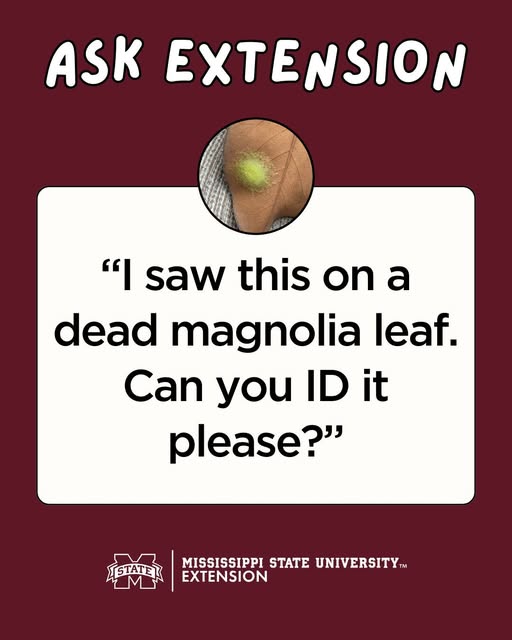Founded
1992
44513
Web
Sign in to see organisation website
Address
MISSISSIPPI STATE
Mississippi Boll Weevil Management Corporation You are here Mississippi Boll Weevil Management Corporation The Mississippi Boll Weevil Management Corporation developed and maintains a Geographic Information System GIS. Beginning in 1992 cotton growers in MS were involved in a volunteer trapping program. Traps were supplied to the grower and trap results were reported to the GIS lab. History of the Boll Weevil in the United States The Boll Weevil entered the United States near Brownsville TX in 1892.
From Social media
News about from their social media (Facebook and X).
We will be hosting several Pine Forestry for the Future Workshops in north Mississippi. These workshops are for forest landowners, foresters, and loggers and will focus on pine plantation management strategies for wildlife and timber production during challenging market conditions. All events will begin at 8:30 a.
Like Comment
Data about organisation
Similar organisations
Similar organisations to MISSISSIPPI BOLL WEEVIL MANAGEMENT based on mission, location, activites.
More Similar OrganisationsSimilar Organisations Worldwide
Organisations in the world similar to MISSISSIPPI BOLL WEEVIL MANAGEMENT.

GREAT BLUE HERON NATURE RESERVE SOCIETY (ca)
We respectfully acknowledge that the Great Blue Heron Nature Reserve is located on the shared traditional, unceded & ancestral territory of the The’wá:lí people, who are part of the Ts’elxwéyeqw Tribe, and the Semá:th Tribe.

Blackwood Biosecurity Inc (au)
Blackwood Biosecurity Inc (BBI) supports landholders to manage declared pests on their property.
Interesting nearby
Interesting organisations close by to residence of MISSISSIPPI BOLL WEEVIL MANAGEMENT

We are a 501(c)3 approved with a mission to transform lives of families and children in need of prop.

ElkhartCares offers the Elkhart Lake community assistance with basic needs during difficult times.
Similar social media (44513)
Organisations with similar social media impact to MISSISSIPPI BOLL WEEVIL MANAGEMENT

28793. SOUTHEAST MISSOURI UNIVERSITY FOUNDATION
Welcome to the official Facebook page of Southeast Missouri State University in Cape Girardeau, Missouri.

28794. Pan American League of Associations for Rheumatology
PANLAR es la Pan American League of Associations of Rheumatology o Liga Panamericana de Asociaciones de Reumatología que agrupa a las 21 sociedades médicas de Reumatología del Continente Americano.

28795. MISSISSIPPI BOLL WEEVIL MANAGEMENT
We provide education you can trust, to help you solve problems and build a better future.

28796. American Association of Petroleum Geologists Foundation
American Association of Petroleum Geologists, an International Organization.

28797. AMERICAN ASSOCIATION OF PETROLEUM GEOLOGISTS
American Association of Petroleum Geologists, an International Organization.
Join us and make a difference for the future!
Sign Up
Please fill in your information. Everything is free, we might contact you with updates (but cancel any time!)
Sign in with GoogleOr
Good News
our family. Excited to see them embrace new friendships and grow in their faith! Education is a journey, and I'm grateful for the support we found along the way. Let's inspire our kids to lead with love and compassion! ❤️📚 #PositiveChange #CommunitySupport
Training Kids in Jesus' Ways -- Not Neutrality or Nationalism
Patheos - Seek. Understand.
Like Comment"🌟 Inspiring to see Fura Jóhannesdóttir, CCO at Interbrand, championing brave and human-centered design! Her leadership is a beacon of creativity during these changing times. Let's celebrate those who push boundaries and make the world a better place! #DesignForGood #Innovation"
Judge of the Day: Interbrand's Fura Jóhannesdóttir champions brave, human design
The Drum
Like CommentGreat news from Oregon! A federal judge has just ruled that sex education programs, which include important discussions on gender identity, must continue to receive grant funding. This is a huge win for inclusive education and ensuring every student feels represented! 🌈📚 #InclusivityMatters #EducationForAll
Judge in Oregon bars feds from halting grant funding for sex ed that involves gender identity
Oregon Live
Like Comment












